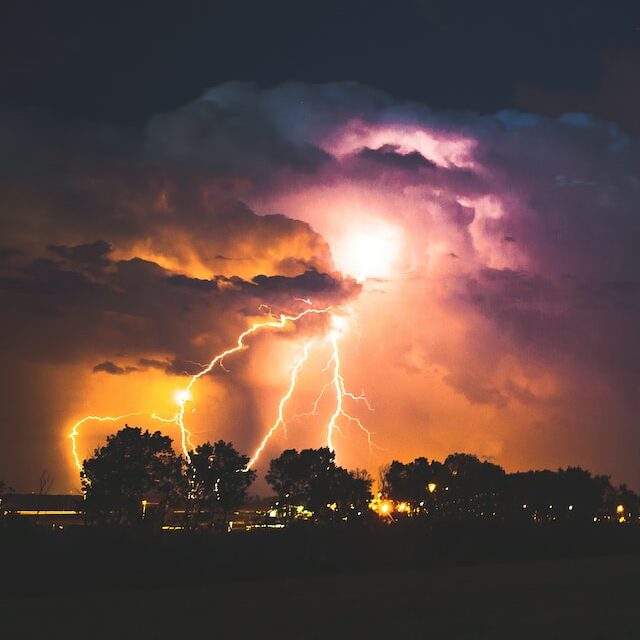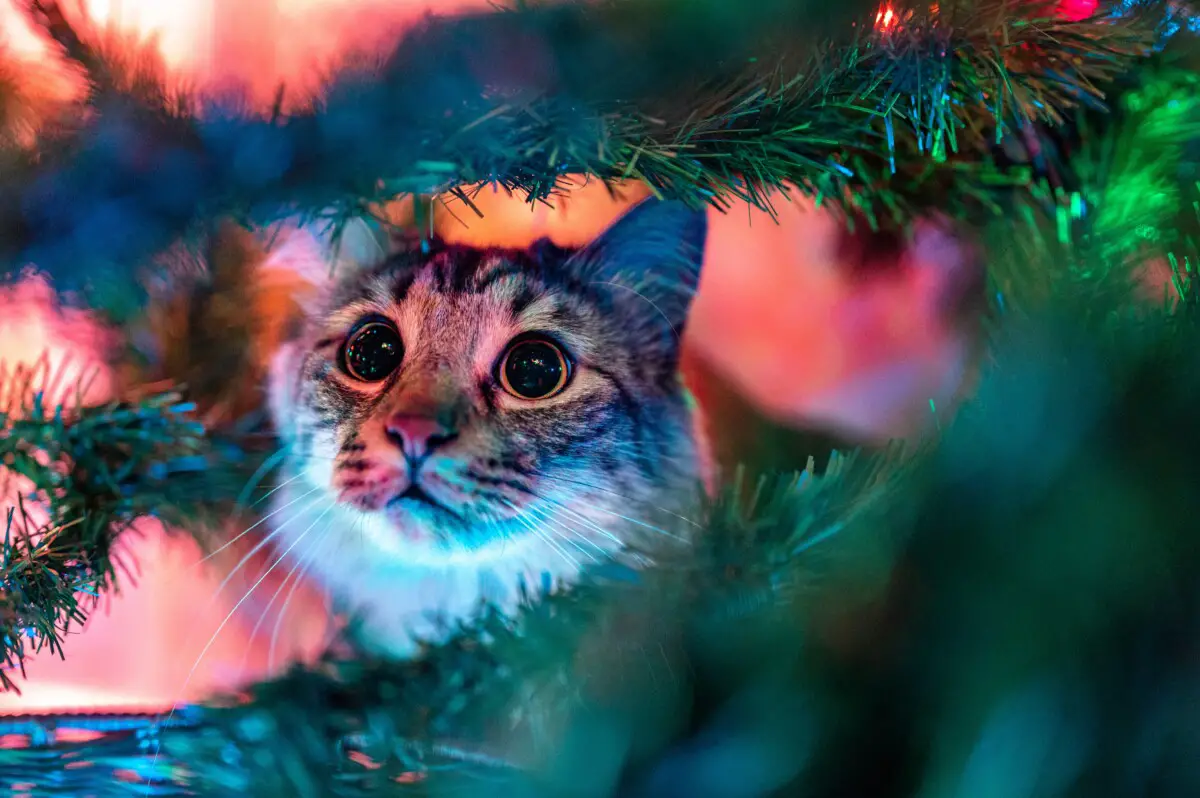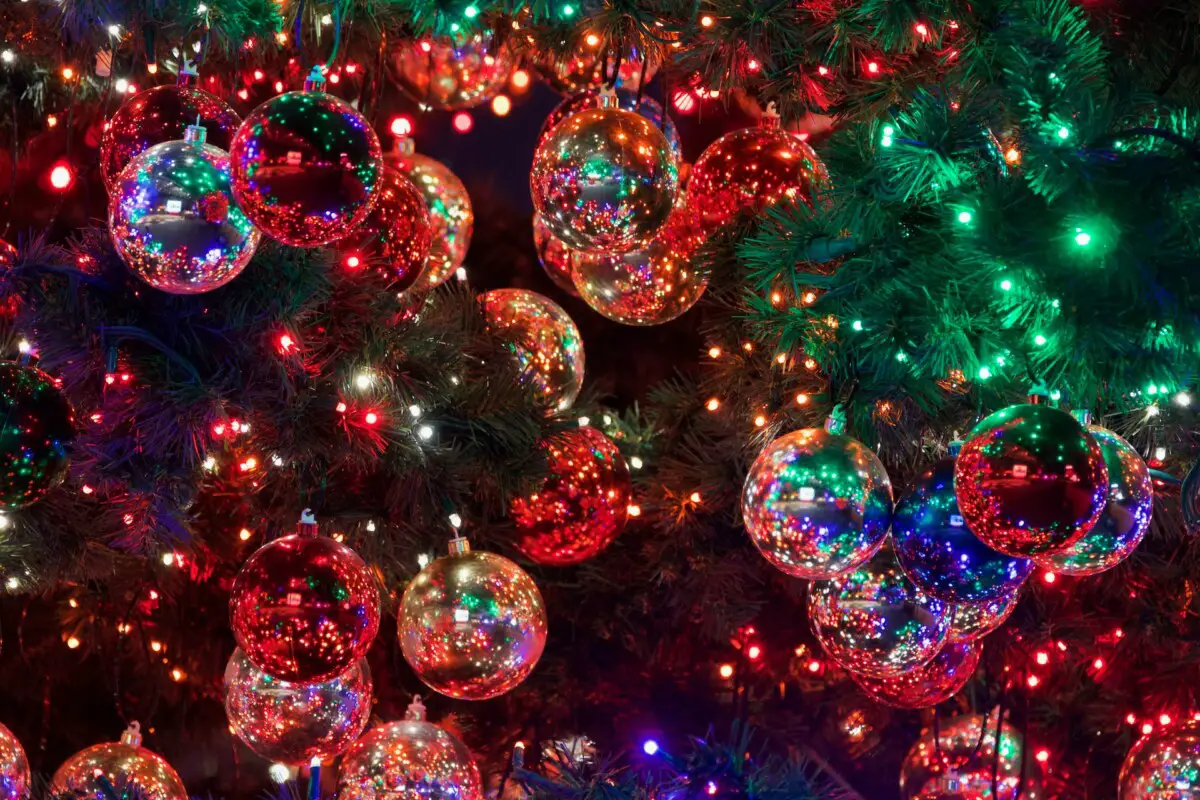Is Lightning Attracted To Fairy Lights & Christmas Lights?
If you’re ever in a situation where a thunderstorm is on the horizon and you have a lot of Christmas lighting put up you may be concerned about the safety of the situation.
Lightning is not attracted to any particular form of decorative lighting. Lightning is not prone to targeting Christmas or fairy lights since it is primarily attracted to taller structures, water and metals. That said, it is still possible for fairy lights to get struck by lightning randomly.
While this is the short-form answer we will continue to discuss why this is the way it is and some safety tips regarding lightning and decorative lights in this article.

What Attracts Lightning?
In order to determine if fairy lights are at risk of getting hit by lightning we should first establish what lightning is attracted to in the first place.
Lightning is a form of electrical current and is therefore attracted to objects and materials that have a higher conductivity than the air which normally surrounds it. Since electrical currents always take the path of least resistance this means lightning is more likely to strike things which are more conductive.
Some examples of objects and materials that lightning often strikes are:
- Tall structures: Lightning is attracted to tall objects such as buildings, towers, and trees. This is because they are often the objects closest to the sky in an area and are more likely to be struck by a lightning bolt.
- Metal objects: Metal objects such as fences, power lines, and metal roofs are also known to attract lightning. This is because metal is a good conductor of electricity and attracts lightning as a result of that.
- Water: Lightning is also attracted to bodies of water such as lakes and rivers. Water is also a good conductor of electricity since its atomic structure is much denser than air.
Is Lightning Attracted To Christmas Lighting?
Considering that lightning is mainly attracted to things with good electrical conductivity it isn’t particularly attracted by Christmas lights.
Fairy lights normally consist of an insulated strip of cable with small LED diodes attached along its length. These LEDs are often covered with some sort of plastic to protect them from being damaged during use.
With this in mind, it makes sense that Christmas lights don’t normally cause lightning to gravitate towards them. Since lightning prefers objects with high conductivity it wouldn’t normally strike at insulated wires and plastic-covered LED chips.
Should You Turn Off Your Christmas Lights During A Thunderstorm?
In the event of lightning or even a thunderstorm, it may be wise to turn off your fairy lights and possibly even unplug them entirely.
Even though we’ve concluded that lightning isn’t particularly interested in these lights it is still interested in objects nearby it. One prime example of this would be the trees these lights often hang in or somewhere along the power grid which powers the lights.
The reason this is bad is that when lightning strikes near these lights or in the power grid it will cause a spike in voltage in the grid. This voltage spike could cause the semiconductors inside of the LEDs to suffer massive permanent damage.
Turning off and unplugging your lights would help against these spikes in voltage since it’s impossible for the voltage spike to reach the LEDs in the string when the circuit is disconnected from the power grid.
This said, they will work just fine in a thunderstorm, assuming it isn’t directly disturbed by the lightning. But the safer option is to simply turn off your lights. This will significantly decrease the risk of fires in the case of a lightning strike.
Are Indoor Fairy Lights Safe From Lightning?
Fairy lights which are placed indoors are normally pretty safe from lightning. You should treat them like any other electronic appliance, like a TV or a computer.
If you would normally unplug your TV or computer it would be advised that you do the same for your fairy lights.
The main effect lighting can have on indoor lights is the voltage spike in the power grid that can occur when lightning strikes a power line or something similar.
Voltage spikes are normally pretty harmless, but as previously discussed they can damage electronics like the LEDs in these lights. However, it is also possible for these spikes to do worse in some scenarios.
For instance, if the voltage spike causes damage in the LED driver of these lights it’s possible that it could cause a fire. This would probably be the result of a short circuit within the driver, which are normally detected by the circuit breaker, but it is a possibility that it could cause a fire in some scenarios.
With all this said, I’d recommend you simply turn off your Christmas & fairy lights as you would with other sensitive electronic devices during thunderstorms. This will minimize the risks involved with your LEDs.
Summary
To summarize, lightning is generally not attracted to fairy lights or Christmas lighting. You shouldn’t be worried that these lights would attract lightning to your home, rather you should be more worried about the damage a lightning strike can potentially do to these lights.
To avoid having issues with LEDs breaking during thunderstorms we advise you to turn your lights off or unplug them entirely. This could possibly save you from having a potential fire break out due to damaged electronic equipment.



